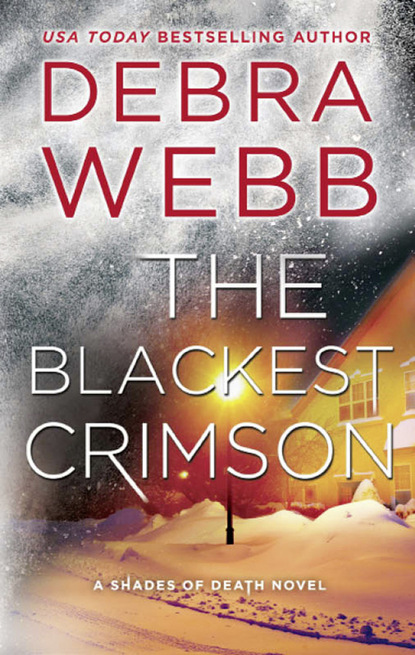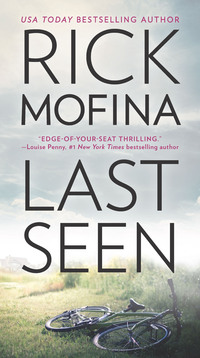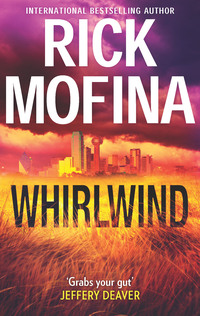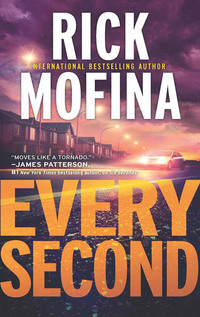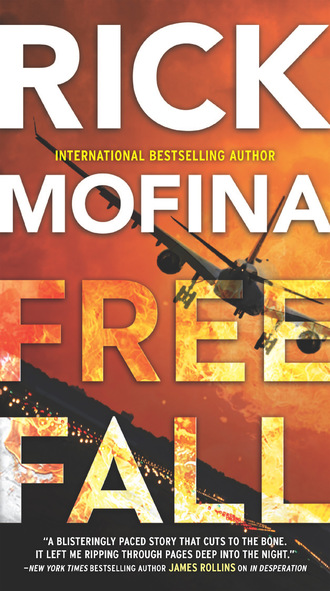
Полная версия
Free Fall
But so far the news of Chuck’s return was only gossip.
The reality was that anxiety had gripped the newsroom. Management weighed every financial decision extensively. Staff faced constant evaluation. Performance on every news story was scrutinized. Newslead had instituted a “staff efficiency process,” linking story count and story pickup to individual performance assessments. It was championed by Kate’s editor, Reeka Beck, a twenty-eight-year-old Ivy League management zealot.
Reeka had a cover-girl face, an insatiable ambition and was convinced that her news judgment was superior to that of seasoned journalists. Reeka had been a junior copy editor at Newslead’s Boston bureau, whose collective work had been a finalist for a Pulitzer. In reality, she possessed little reporting experience. She’d never covered a homicide or asked an inconsolable parent for a picture of their dead child.
But her moneyed bloodline gave her an advantage. Reeka’s uncle sat on Newslead’s board of directors. However, most people strained to tolerate her—her dealings with reporters were often so curt and officious they bordered on rudeness. Conversations with her nearly became confrontations. Reeka had embraced the staff efficiency process even though it was killing morale.
Last month twenty people were let go from headquarters. Some were news veterans like Liz Cochrane, who’d covered wars, interviewed Mexican drug lords and escaped being kidnapped by terrorists in Iraq. Liz had sat near Kate and that day had been horrible.
She’d seen Liz falling apart at her desk while reading her severance letter then tenderly placing her belongings in a box for printing paper—A cardboard coffin for my career, she’d joked while saying goodbye.
Even though Kate had made it through the latest round of terminations, watching the funereal march of dismissed colleagues had been heart-wrenching. She’d been in their shoes; she was familiar with that soul-shattering feeling, for she’d struggled much of her life.
She was a thirty-two-year-old single mom with a nine-year-old daughter and she was living with her sister, Vanessa. There were days when Kate felt like she was hanging on by her fingertips but she was still here, doing the best that she could because she was a fighter who never gave up.
The cab left the tunnel and passed through the toll gates. As it accelerated on the Long Island Expressway, Kate’s phone rang.
It was Reeka. “What’re you doing, Kate?”
“Heading to LaGuardia. We’ve got a plane in trouble.”
“You’re not on today. Who assigned you to go to LaGuardia?”
“No one. I was in the newsroom working on my subway crime feat—”
“I just spoke with Sloane. He’s on duty and he assures me that this Buffalo jet thing is minor. He’s been listening to the scanners all day.”
“No, he wasn’t there when I was there, when things were popping!”
Sloane’s trying to cover his ass by hanging me out to dry—
“Kate, were you in today hoping to collect overtime?”
“No. Reeka, listen, I was there on my own time working on my feature when this broke on the scanners. Sloane was out buying scones.”
“I don’t think so. I know Sloane and if he says—”
Anger bubbled in Kate just as her phone chimed with a news alert. The Associated Press had issued a bulletin: “Commuter jet with multiple injuries on board declares emergency landing at LaGuardia.”
“Reeka, did you see what AP’s just put out?”
A moment passed before Reeka responded.
“I see it. Okay, get to the airport and file as soon as you can.”
Four
Queens, New York
Sirens wailed and emergency lights flashed as two ambulances sped by Kate’s cab on the Grand Central Parkway near the airport.
“We need Terminal C, arrivals pickup area.”
She directed the driver while keeping her phone to her ear. After four attempts, she’d finally reached Dwayne, somebody with EastCloud’s public affairs. He’d put her on hold.
She’d already left messages with the National Transportation Safety Board, the Federal Aviation Administration, LaGuardia Airport, the Port Authority and several other agencies. No responses. Her taxi was on the ramp to the airport when the line clicked and Dwayne returned.
“Sorry, who’ve I got here?”
“Kate Page with Newslead. What happened to Flight Forty-nine Ninety? Why did it declare an emergency?”
“We’re still assessing matters. We’ll put out a statement soon.”
“Are there fatalities? How many injur—?”
“I have to go.”
“Can you estimate the number of injuries?”
“We’ll put out a statement. I really have to go.”
The call ended as Kate’s cab slowed on the edge of havoc.
Red, white, orange and blue lights blinked from the police, fire and paramedic vehicles that were jammed outside the Terminal C arrivals area, backing up traffic. Kate paid her driver, who hastily scrawled a receipt.
Her phone was chiming with news alerts. She saw two news vans parked to the side. Up ahead, TV crews with shoulder-held cameras were shooting footage of people on stretchers being loaded into ambulances. Kate arrived to see one woman, her back raised on a gurney, her head bandaged and tears in her eyes. Microphones hovered near her and reporters hurled questions at her as paramedics placed her in an ambulance.
“Can you describe the flight?”
“It was horrible!” the woman said. “Just horrible!”
A cop inserted himself between the paramedics and cameras.
“Back off guys, back off!”
Kate’s phone continued chiming with alerts. Bloomberg and Reuters had issued bulletins on Flight 4990. Finally, she saw one from Newslead. Someone on the desk must have woken up, Kate thought. It sure as hell couldn’t have been Sloane.
Things were buzzing online, too.
Pictures were popping up everywhere. Twitter had images of the aftermath in the cabin. Luggage, clothes, books, laptops, food containers and other items were strewn about the interior. In one clear photo she was certain she’d seen streaks of blood.
Kate scanned the crowd for a Newslead photographer. Not finding one, she went inside to the busy baggage-claim area where more news cameras had encircled passengers who were recounting their ordeal for reporters. She joined one group and extended her recorder.
“Could you please take us through it again?” someone asked.
“It was right after they’d served us drinks,” a man with bloodied scrapes on his cheeks began. “Then bam, the plane tilts like we’re going to roll upside down. Like this.” He extended his arms, one hand pointed to the floor, the other to the ceiling as the woman beside him nodded.
“Everybody and everything not belted or bolted down flew,” the woman said, her eyes still wide with shock.
“People were hurled like rag dolls. The service trolley smashed around. We were hanging on with all we had,” the man said. “Then the plane rolled the opposite way, tossing people and things around like we were in a clothes drier. People were screaming and praying.”
“The luggage bins opened,” the woman said. “Suitcases and bags crashed on everyone. Then the jet just dropped and we were plunging, diving down. My stomach was in my mouth.”
“What went through your mind at this point?” a reporter asked.
“That we weren’t going to survive. That we were so helpless. That this was the end,” she said.
“How long did it last?” another reporter asked.
“I don’t know.” The man shook his head. “Five, maybe eight minutes.”
Kate glanced around and was relieved to see Stan Strobic, a Newslead photographer, had joined the group.
“When it was over,” the woman said, “and they got things under control, it got quiet, except for the moans and sobs. People were trying to comfort those who were hurt. I think one lady was a nurse. But the pilot never came on and said what happened. Nobody has told us anything.”
As the interview wound down, the couple—Connie and Carmine Delvecchio—spelled their names for the reporters. They ran a family towing business on Staten Island. Kate passed them her card.
Then she saw a woman across the baggage-claim area. She was near the baggage carousels, sitting alone on a bench, her back to the wall, her head raised with her eyes closed in anguish.
Kate nodded to Strobic to hang back as she approached her alone.
“Excuse me.”
The woman looked to be in her mid-thirties. She had a pretty, fresh-scrubbed face and was gripping her phone in her lap with both hands.
“Yes?”
“I’m Kate Page. I’m a reporter with Newslead. Were you on EastCloud Forty-nine Ninety?”
The woman nodded.
“Can I get your name?”
“Diane Wilson.”
“Would you talk to me for a story about what happened on the flight?”
The woman was trembling as she adjusted her hold on her phone. She swallowed hard.
“It was the worst thing you could imagine,” she said.
Kate sat next to her. “Tell me about it.”
“I was certain we were going to crash and I was going to die.”
Kate took notes. “And at that moment, what went through your mind?”
“All I could think about was my family, that I’d never see them again, so I said goodbye.”
Kate took a quick look around. “Your family was on the plane with you?”
“No. I was alone. I used my phone to make my last message to my children and my husband.”
Diane lifted the phone slightly and lovingly from her lap.
“You texted them?”
“I made a video.”
“Did you send it to them?”
“No.”
“Has anyone seen it?”
“No.”
“Would you let me see it?”
Diane considered Kate’s request.
“I’m not sure. It’s private and my family’s coming to get me.”
“I know, but it might help me to really understand what you and the other passengers went through. It would help readers appreciate your ordeal.”
Diane lowered her head to her phone, caught her bottom lip between her teeth and her face crumpled. She fought tears as she stared at her phone for a moment, then her fingers began working.
“You can look at it but I can’t give it to you.”
The screen came to life with Diane’s face, a mask of fear. Through her tears she struggled to smile as her voice quivered in the cabin.
“It doesn’t look good. The plane’s in trouble and I don’t think we’re going to make it. No matter what happens, you know that Mommy absolutely loves you. Brandon, honey, take care of Melissa. Melissa, you help your brother take care of Daddy. Del, sweetheart, you’re the love of my life. Be good to each other and remember how much I love you.”
Kate caught her breath.
For a second the footage exploded in chaos as the jet tilted at a ninety-degree angle, the image froze before the screen went black.
Five
Manhattan, New York
Passengers and crew were tossed “like rag dolls” in the cabin of the EastCloud Airlines flight when it encountered severe turbulence, sources told Newslead.
What the—? That’s not what I wrote and that’s not what happened!
Kate had just returned to the Newslead building from LaGuardia and was in the elevator when her phone alerted her to Newslead’s first full story on Flight 4990. She was incredulous as she read. Ninety percent of the item was her work but the story was topped with a single byline:
Sloane F. Parkman.
She was credited at the bottom in smaller font.
With files from Kate Page.
She cursed. And as the elevator rose, she seethed.
Calm down and think this through.
Biting back her anger she checked her phone for responses to the repeated calls she’d put in to the official agencies. Not much had come back to her, except a text from LaGuardia Operations, with a short general timeline from when Flight 4990 first reported a problem to its emergency landing.
The doors opened to Newslead’s fortieth-floor offices.
Kate swiped her ID at the security lock and swept through reception, with its wall of enlarged Newslead photos of pivotal points in history—immigrants gazing at the Statue of Liberty in 1901, a child in Africa comforted by an aid worker, a soldier weeping in Vietnam, and Martin Luther King at the Lincoln Memorial.
In the newsroom she saw no sign of Penny, the news assistant. But when Kate passed by the glass walls of the editors’ offices, she noticed Reeka Beck’s jacket and bag on her desk.
Reeka was not in her office as Kate went by.
But Sloane F. Parkman was in the scanner room, on the phone, working at the computer with the door closed. He was hanging up as Kate pulled it open to the onslaught of the radios.
“Hi, Kate. I’ve just confirmed that they took the injured passengers to hospitals in the area—Sinai, NYP/Queens and Forest Hills. We’re pretty sure they’re all minor injuries, one little boy with a concussion and broken arm, so no big deal on this incident. By the way, thank you for your help on my story. It wasn’t necessary but nice work, much appreciated.”
“What the hell do you think you’re doing, Sloane?”
“Excuse me?”
“You know what I’m talking about. What’s your name doing on my story, and why did you cite turbulence? It wasn’t turbulence!”
“Sorry, but I’m on duty today, you’re not. Didn’t Reeka talk to you? She’s come in. I think she’s getting a coffee.”
“Sloane, you weren’t here when this story broke.”
“I was.”
“You weren’t. You’d left the scanner room unattended to get scones. Where’s the news assistant, where’s Penny?”
“Her shift ended.”
“Penny and I were both in this room when I caught the dispatches from Forty-nine Ninety. You weren’t here.”
“I was here, Kate, when I heard the dispatches—”
“What you heard—when you came back—was the aftermath!”
“I was here! Look, I’m trying to be diplomatic but the truth is you were trying to hijack my story.”
“Bullsh—”
“What’s going on?” Reeka stood behind Kate.
“I told you, Reeka, Sloane was not at the scanners when the story broke and he’s inserted incorrect information into the story I filed.”
“What’s incorrect?”
“His unnamed sources said turbulence was the problem. It was not turbulence. It was a malfunction.”
“What kind of malfunction?”
“I don’t know.”
Reeka looked at Sloane then at Kate.
“He has impeccable sources in the airline industry. Who’s your source that contradicts his?”
“The pilot.”
“You interviewed the pilot?” Reeka asked.
“No, it came over the scanner. There was static but I heard the crew say it was not turbulence, it was a malfunction.”
Reeka looked to Sloane.
“Did you hear anything like that?”
He shook his head.
“He wasn’t here!” Kate said.
“Kate, do you have an on-the-record source confirming it was a malfunction? The NTSB? EastCloud? Any official?”
“Not yet.”
“Kate,” Reeka said, “we all know that the information we hear on police radios can often be wrong, especially with first reports. When I arrived Sloane was at his post and he had everything in hand.”
“Oh my God.” Kate shook her head in disbelief.
“What?” Reeka asked.
“You actually believe him. He’s trying to downplay this story while taking credit for it and being wrong about it. He lied and you believe him. This could hurt Newslead.”
“Excuse me,” Sloane said. “I take umbrage at your accusation, particularly after you tried to secure overtime by hijacking a call I was handling.”
Fury burned through Kate and as she battled to restrain herself she glimpsed the plastic trash can holding a white crumpled take-out bag. She retrieved it and flattened it out. The bag was from Miss Muffet’s Café & Cakes and had “Sloane” scrawled on it in marker. A receipt was stapled to it. Kate circled the date and time of purchase.
Then she took a picture with her phone.
“What’re you doing?” Reeka asked, as if Kate had lost her mind.
Sloane shook his head.
“This looks like yours, right? You’re the only Sloane in the room,” Kate said, scrolling on her phone, holding it out for Sloane and Reeka to see a text concerning Flight 4990. “And this is the timeline from LaGuardia, proof that when the plane was in trouble, you were at Miss Muffet’s buying scones. Proof that you lied.”
Sloane glared at Kate, saying nothing.
“I think,” Reeka said, “given the circumstances, everybody needs to take a breath here.” A long, uneasy moment passed before she continued. “Kate, if you can stay to help update the story, I’ll authorize your overtime. Sloane, I’m assigning you to tie up loose ends and follow up the story tomorrow. We’ll get the night desk to monitor for developments and top off with any updates. Okay?”
Reeka looked to Kate then Sloane before concluding.
“As for what happened here—we’ll talk later and sort out what appears to be a misunderstanding. Is everybody clear?”
“Crystalline,” Sloane said.
Kate said nothing, and left the room.
* * *
Misunderstanding.
Kate fumed as she worked at her desk.
There’s no misunderstanding. I caught Sloane failing at his job and lying about it. And Reeka protects him. This is how the one percenters get ahead.
One thing had been hammered home: Sloane was not to be trusted. That guy was not a reporter—he was somebody’s favor. It was dangerous for Kate and for Newslead but she had to shove it all aside and get on with her work.
She went back to her subway feature and was nearly finished when she received a text from EastCloud. The airline had just issued a news release on Flight 4990.
The flight encountered an as-yet-undefined situation on its approach into New York and 28 passengers and 2 flight attendants received injuries ranging from fractures and concussions, to minor cuts and bruising, to nausea. All were evaluated by paramedics at the airport and were transported to area hospitals for observation as a precaution. None of the injuries are considered life-threatening or critical at this time. EastCloud will work closely with the National Transportation Safety Board to determine the nature of this incident. The aircraft will be taken out of service during the investigation.
As Kate digested EastCloud’s statement, she tapped her finger on her desk. “An as-yet-undefined situation.” What was that supposed to mean? Kate began flipping through her notes from the scanner, looking for the original comments the crew had made.
New York Center had clearly asked 4990 if it was citing turbulence.
The crew’s response: Negative on turbulence. We had a malfunction.
Kate’s phone rang.
“Paul Murther, spokesperson with the NTSB.”
“Paul, what happened on EastCloud Forty-nine Ninety? Why did it declare an emergency?”
“We can’t speculate on that. All we can say at this time is that we’re gathering all the details. We’re looking at the severity of the injuries and for any damage to the aircraft. We’ll analyze the flight data.”
“Was it turbulence or a malfunction?”
“We can’t speculate but I can confirm that we’re putting a team together to investigate.”
Kate alerted Reeka to the new information she’d received then began updating the story with a new lede.
Mystery surrounds the cause of mayhem aboard an EastCloud Airlines flight that tossed some thirty passengers and crew “like rag dolls,” injuring some seriously, officials indicated to Newslead.
More than once the Richlon-TitanRT-86 rolled to a ninety-degree angle, causing some passengers to prepare final messages to their loved ones.
“It doesn’t look good. The plane’s in trouble and I don’t think we’re going to make it,” Diane Wilson told her children and husband in a farewell video she’d recorded on the stricken flight...
After she’d sent her story to Reeka, she went to the washroom to freshen up. Upon returning, she was glad the updated story had been issued with a solitary byline on top: “Kate Page.”
She thought of Diane Wilson, the mother from Brooklyn, and her goodbye video. Then she looked at the faces of her daughter and sister smiling back at her from the framed photo next to her computer monitor. Grace and Vanessa.
What would I say to you in the final moments of my life?
Six
Washington, DC
Jake Hooper kept pace with the rhythmic jingling of the leash as he and his German shepherd, Pax, trotted alongside the Lincoln Memorial Reflecting Pool at the National Mall.
Pax panted happily. He loved running here. But Hooper was running with a heavy heart. His dog was getting on and his arthritic pain and bone spurs had taken a toll. The vet didn’t give Pax much time before the pain would be unbearable and he’d have to be put down.
Hooper and his wife, Gwen, couldn’t have children. For them, Pax was a cherished family member who gave them nothing but unconditional love. Hooper was thinking about what life would be like without him when his phone rang and he stopped cold.
It was from the National Transportation Safety Board duty officer.
“Jake, it’s Crawley at the comms center. We got one at LaGuardia, an EastCloud Richlon-TitanRT-86. More than two dozen injured. No fatalities. Landed without incident.”
“Thank God for that. Do we have a suspected cause?”
“Crew reports a flight control computer malfunction.”
“A computer malfunction?” Hooper considered it.
“The RT-86 is a new model. That’s why we’re traveling on this one. I’m sending you a ticket now.”
“Okay. I’ll get home, grab my bag and get to National.”
Hooper cupped Pax’s head in his hands, reading the question in his big eyes.
“That’s right. I gotta go, pal.”
They caught a cab home to their porch-front row house in Glover Park. Hooper took a quick shower, called a cab and set out bowls of fresh water and food for Pax, who whined a goodbye as Hooper shouldered his prepacked bag and locked the house.
In the cab to the airport, he texted Gwen, who was at her sister’s in Georgetown. Then he digested the information coming in about the aircraft and the occurrence.
EastCloud Flight 4990 had originated in Buffalo, bound for LaGuardia, with eighty passengers and five crew aboard. The plane had been twenty-seven thousand feet over the Catskills when it suddenly rolled ninety degrees right, then ninety degrees left, then dropped seven thousand feet before the crew regained control. Result: twenty-eight passengers and two attendants injured, some of them seriously. There was damage to the cabin.
The crew reported a flight-management systems problem. But there are safety features to guard against that.
Hooper’s years as an NTSB investigator had taught him that initial information on the circumstances of an incident was often incomplete. He always regarded preliminary data with caution. They had a long way to go yet and a lot to do, like analyze the cockpit voice recorder and the flight data recorder, and talk to the crew.
He considered the plane.
The RT-86 had come on stream about two years ago with few problems. The new model had a good safety record with no incidents with significant implications. Bottom line, Hooper thought the RT-86 was a very solid, state-of-the-art commercial jetliner.
So what could’ve caused the problem?
Don’t overthink this. Wait until all the facts are known, he thought. But it was impossible not to consider theories. He was a detective. Probing crashes and incidents was all he’d done since he’d got his degree in aeronautical science from Arizona State University.
Hooper had been among the top graduates of his class. Right out of school he’d been hired as a civilian at Naval Air Systems Command in Virginia, where he’d examined United States Navy and Marine Corps aircraft accidents.
Along the way, he’d become a licensed pilot, then a flight instructor, and he’d obtained an engineering degree. He’d left Virginia when he’d been hired by the MacCalleb Aircraft Company in Wichita, Kansas, as a flight test engineer. He’d taken part in dozens of accident investigations, providing technical help to Federal Aviation Administration safety inspectors and the NTSB. He’d frequently and successfully challenged their findings.






